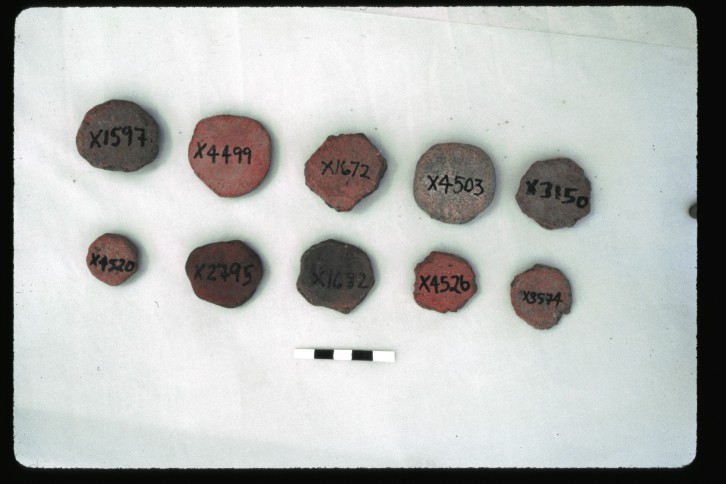One additional aspect of the 1986 season was to take one smallish area where architecture (nearly all mud brick) was quite near the surface and clear a larger area as something of a trench -- it was probably technically a "trench", but it was mostly excavated as a series of 2-meter units within a bounded area. We called it the Block Area. The architecture was only about 10cm below the surface; the surface was what is called a "lag" deposit called the Upper Pottery Layer or UPL as we called it. In Egypt this layer is called "sebakh" which was created by farmers sifting the top layer of sediment for use as fertilizer. Consequently, it's a very coarse-grained sediment with a lot of pottery and larger objects, with the fineer organic-rich sediment carted away.
This photo is an overview of the Block Area:

Full image here (KR13-86-36.JPG).
You can see the grid system and some of the features already uncovered. There were several mud brick storage pits in this area and at least one major hearth structure. The ceramics present seem to represent a food preparation and storage area. A few later burials were also found here.
How was the photo taken?

Full image here (KR13-86-37.JPG).
That's Rob Wenke up on the tripod and probably Richard Redding eagerly waiting for him to fall off.
One more:
How was the photo taken?

Full image here (KR13-86-25.JPG).
We called these thing Round Jobbies. They're regular ceramic sherds that have been rounded off to circles. Not clear what they are, but the best guess is that they were used as bottle stoppers. I did some statistical analysis of their characteristics but found nothing. Everything about them is distributed in a normal (bell-shaped) distribution. I even tried comparing them to known rim diameters of our ceramics but no relation.